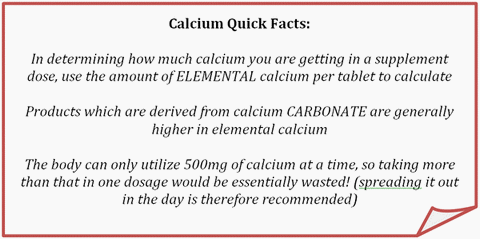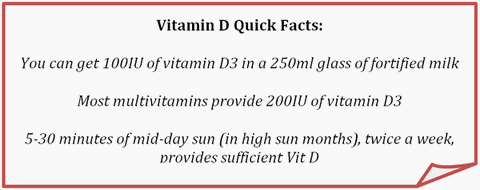Nutrition Copy
Calcium: An essential element for life
Calcium is crucial to maintain life. Just about every cell in the body, including those in the heart, nerves and muscles, relies on calcium to function properly and bones require calcium to maintain their strength.
In the body, calcium is found in three places: in the skeleton and teeth, in the cells, in the blood. Because calcium is so important, the body has a carefully regulated system to ensure that a good supply is always – and immediately – available. The body does this in three ways:
- It absorbs calcium directly from the food we eat.
- It takes calcium from our bones if there is not enough available. When
this happens, the bones become less dense and more fragile. - It slows down the amount of calcium that leaves the body in the urine
by returning some to the blood stream where it remains available to organs and cells.
The main goal of good calcium nutrition is to maintain an adequate supply so that our bodies do not have to dip into our only calcium reservoir – our bones.
The role of calcium in building stronger bones
By age 20 in men and age 16 in women, bones typically stop growing in length and we are almost at our peak bone mass – calcium plays a large role in achieving that peak bone mass.
Bone is living tissue, constantly renewing itself. Although bone is strong and relatively flexible, everyday wear and tear causes tiny structural defects, much like those that occur in the foundations of a building over time. In our bodies, osteoclasts and osteoblasts are two groups of specialized cells that perform the work of a “maintenance crew.”
As we age, the two groups of cells that form the maintenance crew become less efficient in working together – the osteoclasts remove old bone faster than the osteoblasts are able to rebuild it. In addition, calcium, like many nutrients, is absorbed less effectively as we age.
Studies of older adults show that adequate calcium intake can slow bone loss and lower the risk of fracture.
How Much Calcium Do We Need?
| Age | Daily calcium requirement |
|---|---|
| 4 to 8 | 800 mg |
| 9 to 18 | 1300 mg |
| 19 to 50 | 1000 mg |
| 50+ | 1200 mg |
| pregnant or lactating women 18+ | 1000 mg |
How to maximize calcium intake through diet
Getting an adequate amount of calcium every day
Consult a reliable food chart (see the Osteoporosis Canada Website for sample food chart and calcium calculator) which shows the calcium content of specific foods and compare against chart above to determine if an adequate amount is being obtained through diet alone.
Eat foods that contain calcium that is easily absorbed.
Dairy products such as milk, cheese and yogurt are excellent sources of calcium because they contain high amounts of calcium that are easily absorbed by the body. Skim milk products provide as much calcium as whole milk with the added advantage of less fat and cholesterol. Some calcium-fortified soy beverages and orange juices may contain as much calcium as milk (check the labels). Vegetables also provide calcium, as do fish products containing bones (canned salmon and sardines) and meat alternatives such as lentils and beans.
Calcium Supplements
Calcium supplements are tablets, capsules or liquids containing the mineral calcium from a non-food source. These sources include:
Calcium carbonate, which can be refined from limestone, natural elements of the earth, or may come from shell sources, usually oyster. Shell sources are often described on the label as a “natural” source. Calcium carbonate from oyster shells is not “refined” and can contain variable amounts of lead.
Chelated
calcium, which refers to a special way in which calcium is chemically combined with another substance. Calcium citrate is an example of such a chelated preparation. Calcium may also be combined with other substances to form preparations such as calcium lactate or calcium gluconate.
Powdered bone (bonemeal) or dolomite, a mineral found in rock. (Bonemeal is not recommended, as it may contain contaminants.)

Vitamin D: A key factor in good calcium absorption
The body makes vitamin D when exposed to sunlight. Since most Canadians don’t always get enough sun exposure and it may be difficult to obtain necessary amounts of vitamin D through diet alone, supplements are generally a good idea. Vitamin D3 increases calcium absorption by as much as 30 percent. Osteoporosis Canada recommends that Canadians aged 19 to 50, including pregnant or lactating women, receive 400 – 1000 international units (IUs) of vitamin D3 per day. Adults over 50 should receive at least 800 – 2000 IU.
